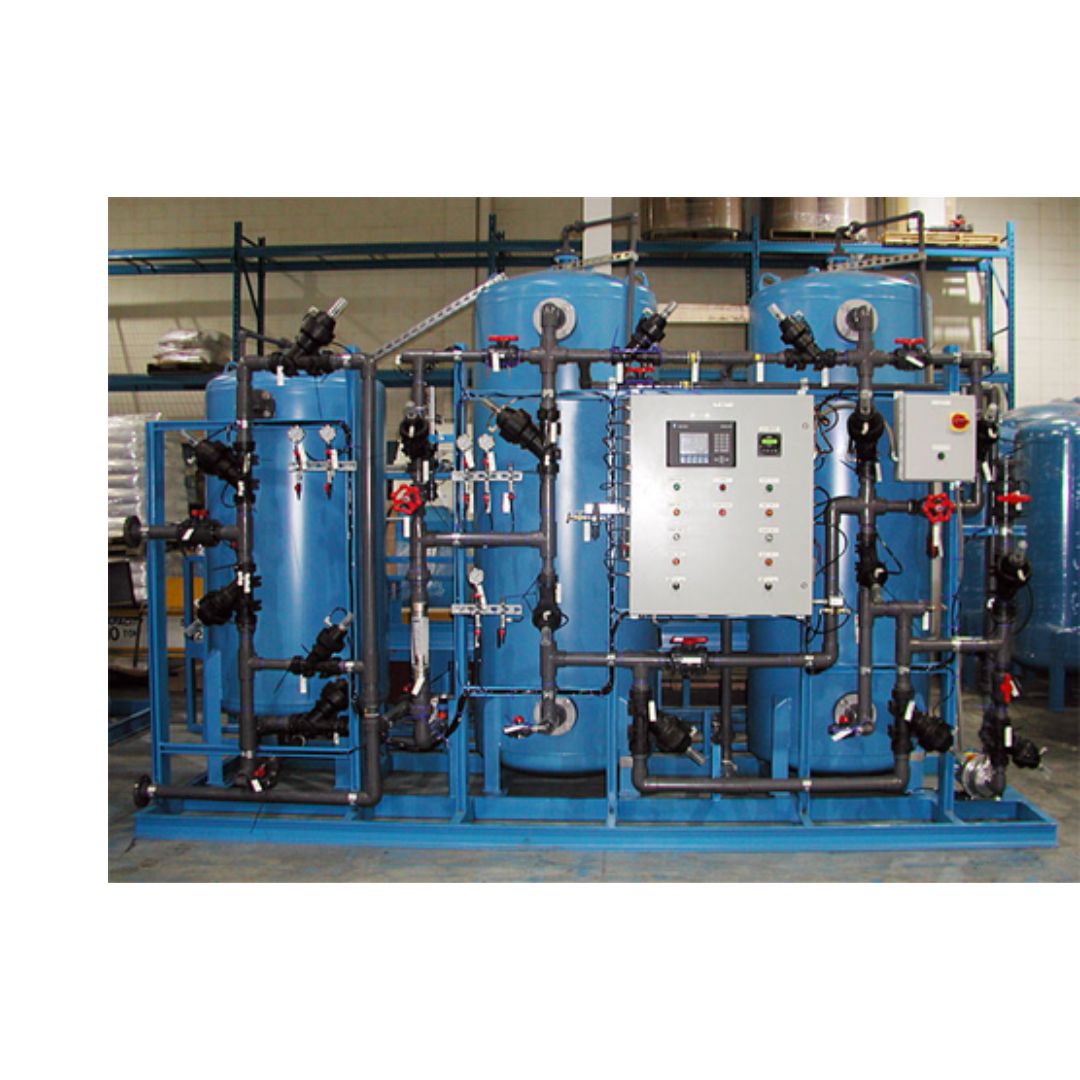Deionization and Mixbed Systems

Deionization system is the process of removing cationic and anionic ions dissolved in water from water using resin-filled ion exchangers. The basic working principle is based on the ion exchange method. The unit where cation ions are removed is called cation exchanger, and the unit where anion ions are removed is called anion exchanger. Systems in which both resins are combined are called Mixbed.
Raw water, passing through ion exchangers, first changes its cationic charges such as Ca, Mg, Na, with H+ ions. Then, the water passes into the tank where the anionic resin is located and replaces its anionic charges such as Cl, SO4, HCO3, SiO2 with OH- ions. At the end of the ion exchange process, the OH- and H+ ions given to the water combine with each other to form the water molecule. Pure water is obtained at the output of the system, which is highly purified from positive and negative ions, and all physical, chemical and biological impurities have been removed.
The ion exchange resin used in the system becomes saturated with the ions it takes from the water after a certain period of time, and it no longer produces water of the desired quality. In this case, the regeneration process is carried out in order to refresh the spent resin. This process is carried out by regenerating the anionic resin with caustic and the cationic resin with acid, and finally the system is ready to produce deionized water again.
The amount of resin used in the tank is calculated according to the raw water conductivity, the flow rate of the water and the ion holding capacity of the resin used. Thanks to the conductivity meter to be placed at the system outlet, the water conductivity can be controlled and the system can regenerate itself fully automatically when the outlet water conductivity exceeds the desired value.
Deionization systems are widely used in industrial facilities that require highly pure water or at the outlet of reverse osmosis units. If there are situations where even lower conductivity is required at the system output, a Mixbed unit is placed at the end of the deionization system in such processes. In this way, very low conductivity water can be obtained. The amount of resin to be placed in the Mixbed unit is calculated on a project basis depending on the inlet water conductivity and capacity. When necessary, a regeneration system can be integrated into the Mixbed unit.
